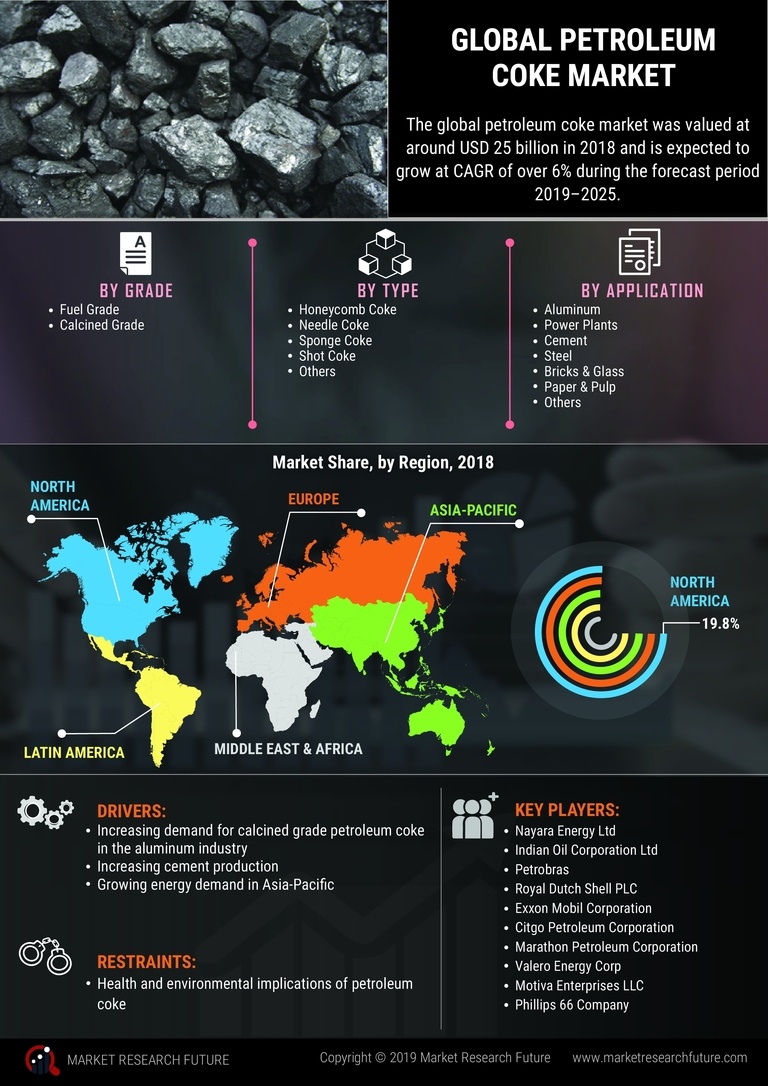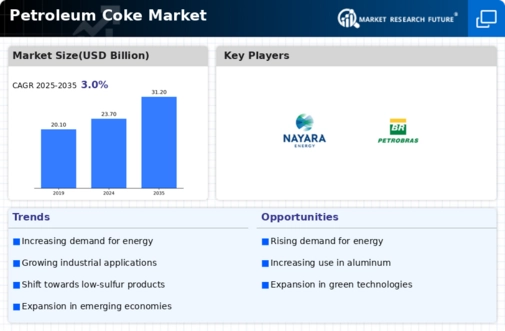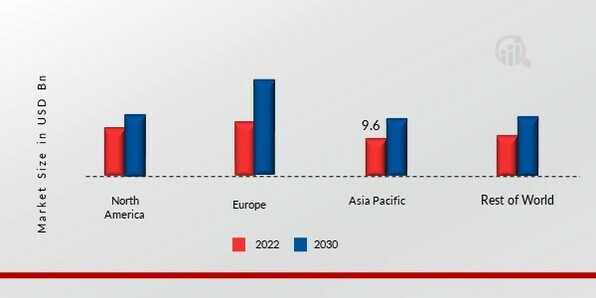Growth in Energy Production
The Global Petroleum Coke Market Industry is significantly influenced by the energy sector, particularly in power generation. Petroleum coke serves as a cost-effective fuel alternative for power plants, especially in regions where natural gas prices are volatile. The ongoing transition towards cleaner energy sources, while still incorporating petroleum coke for its high calorific value, indicates a complex relationship between energy production and petroleum coke utilization. As energy demands rise globally, the market is projected to grow, with estimates suggesting a market value of 31.2 USD Billion by 2035, highlighting the enduring relevance of petroleum coke in energy production.
Market Trends and Projections
The Global Petroleum Coke Market Industry is characterized by various trends and projections that shape its future. Current estimates suggest a market value of 23.7 USD Billion in 2024, with expectations to reach 31.2 USD Billion by 2035. The projected CAGR of 2.51% from 2025 to 2035 indicates a steady growth trajectory, influenced by factors such as industrial demand, energy production, and regulatory changes. These trends highlight the industry's resilience and adaptability in a changing economic landscape, suggesting that while challenges may arise, the Global Petroleum Coke Market Industry is likely to maintain its relevance in the global economy.
Expansion of Petrochemical Industries
The Global Petroleum Coke Market Industry is poised for growth due to the expansion of petrochemical industries. As these industries utilize petroleum coke as a feedstock for producing various chemicals and materials, the demand for petroleum coke is expected to rise. The increasing production of plastics and synthetic fibers, which are derived from petrochemicals, further fuels this demand. Emerging economies are particularly driving this trend, as they invest in petrochemical infrastructure. This expansion could lead to a more robust market, with projections indicating a steady increase in market value through the next decade.
Increasing Use in Cement Manufacturing
The Global Petroleum Coke Market Industry benefits from the cement manufacturing sector, where petroleum coke is utilized as a fuel source. The cement industry, which is one of the largest consumers of energy, increasingly turns to petroleum coke due to its high calorific value and lower cost compared to traditional fuels. This trend is particularly evident in developing regions, where infrastructure projects drive cement demand. As the industry evolves, the integration of petroleum coke is likely to enhance operational efficiencies, thereby contributing to the market's growth trajectory. The anticipated CAGR of 2.51% from 2025 to 2035 underscores this potential.
Rising Demand from the Aluminum Industry
The Global Petroleum Coke Market Industry experiences a notable surge in demand driven by the aluminum sector. As aluminum production relies heavily on petroleum coke as a key source of carbon, the growth in aluminum applications across various industries, including automotive and construction, propels this demand. In 2024, the market value is projected to reach 23.7 USD Billion, reflecting the increasing reliance on petroleum coke for aluminum smelting processes. This trend is expected to continue, as the aluminum industry anticipates substantial growth, potentially influencing the Global Petroleum Coke Market Industry positively through 2035.
Regulatory Environment and Environmental Concerns
The Global Petroleum Coke Market Industry faces challenges due to the evolving regulatory environment and growing environmental concerns. Stricter emissions regulations and sustainability initiatives may impact the demand for petroleum coke, particularly in regions prioritizing cleaner energy sources. However, the industry appears to adapt by exploring cleaner technologies and alternative uses for petroleum coke. This dynamic may lead to innovations that align with environmental standards, potentially mitigating negative impacts on market growth. While these challenges exist, the industry's ability to navigate regulatory landscapes will be crucial for its future viability.


 Source: Secondary Research, Primary Research, Market Research Future Database and Analyst Review
Source: Secondary Research, Primary Research, Market Research Future Database and Analyst Review








